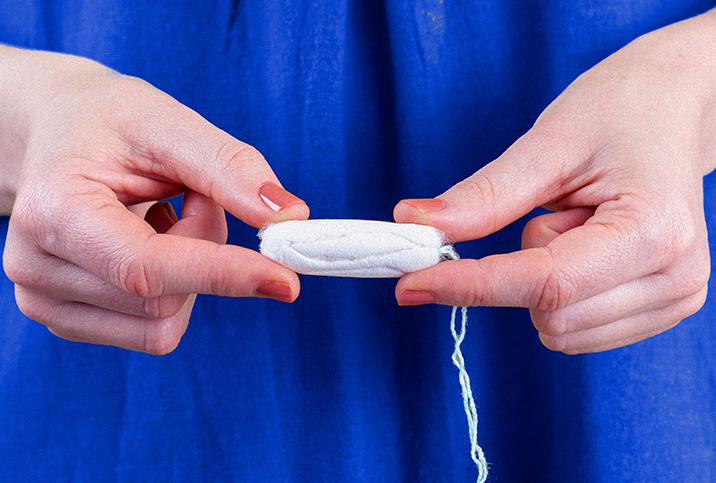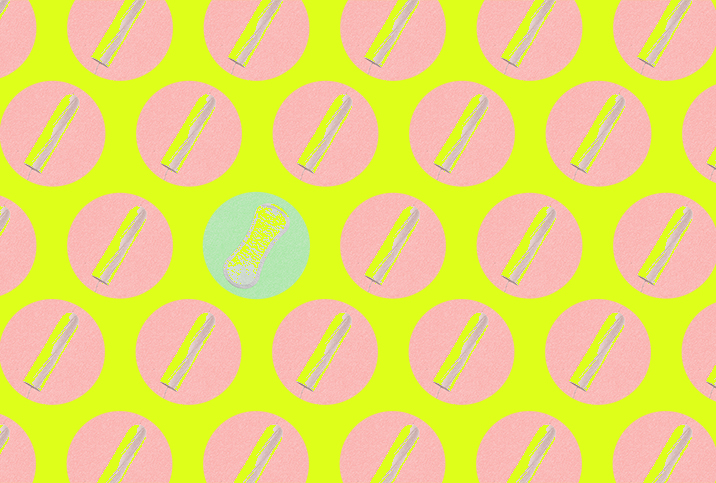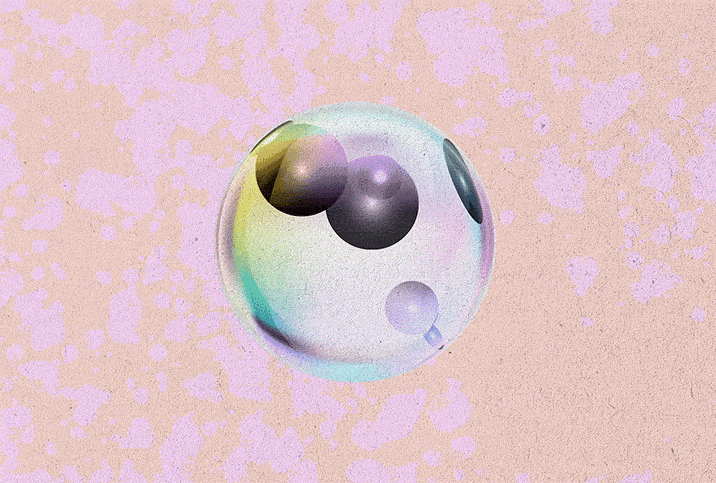Why Can't I Use Tampons After Giving Birth?

It's no secret that you experience bleeding after giving birth. This bleeding is known as lochia, which consists of blood, placental tissue and mucus from your uterus. It is heaviest during the first couple of days, but don't be alarmed because this is completely normal after delivery.
Natasha Spencer, M.D., an OB-GYN at Orlando Health Physician Associates in Florida, reassures that the bleeding should taper off and eventually stop after four to six weeks for most women. However, in some circumstances, it can last up to 12 weeks.
During this time of healing, it's important to care for your vagina correctly. Although your first thought might be to use a tampon for the blood flow, your doctor will advise you to avoid using a tampon during the first six weeks after giving birth.
Avoid the use of a tampon
Lora Alvey Perry, M.D., an OB-GYN at Ascension St. Vincent Evansville in Indiana, explained how the cervix is still "open" during the first few weeks after delivery, so you should avoid placing anything in the vagina to lessen the risk of infection. This applies to both vaginal and C-section deliveries.
Following delivery, most women have tears and lacerations within the vagina and on the vulva, Spencer said.
"Wearing tampons could be more traumatic and could possibly introduce a vector for infection," Spencer said.
Similarly, you should avoid menstrual cups, disks and having sex during the first few weeks, as this can "interfere with the healing of vaginal tears and lacerations and prevent endometrial shedding freely," Spencer said.
You should wait until your first postpartum visit before you start using tampons again; this often takes place six weeks after giving birth. However, if you have had a C-section, it's normal to have a checkup at two weeks and again around six weeks.
During this visit, a doctor performs an exam to check the cervix and make sure everything is healing correctly and returning to normal. Assuming they are happy with your recovery, you may be able to start using tampons again.
Using maternity pads instead of tampons
As you will be bleeding heavily for the first one to two days, it's recommended that you use maternity pads. These pads are thicker, longer and more absorbent than ordinary sanitary towels, so they should prevent leaks while keeping you comfortable.
During the first few hours, you may be changing your pad every one to two hours. However, when the bleeding subsides after a couple of days and starts to resemble a normal period, you should need to change your pad every three to five hours.
Another alternative is menstrual underwear or reusable pads, both of which are more environmentally friendly and have high absorption. However, they may not offer enough protection during the first couple of days if you are bleeding heavily, so keeping some maternity pads in your bag is a sensible idea.
What is abnormal bleeding?
While it's normal to experience heavy bleeding after birth, there are times when the bleeding is cause for concern. Spencer explained that postpartum hemorrhage can occur within 24 hours of delivery or be delayed up to 12 weeks.
The warning signs are heavy bleeding that isn't subsiding, passing large clots, saturating a pad within one hour for several hours and experiencing light-headedness, dizziness, shortness of breath and loss of consciousness.
If you are presenting with any of these symptoms, Spencer encouraged people to seek help immediately.
Other ways to prevent infection and encourage healing
In addition to following directions about wound care and keeping areas with stitches clean and dry, Perry recommended that you avoid smoking because it can increase the risk of infection and prevent healing. If you have diabetes, you should continue to follow instructions for diet and medication and maintain good control of blood sugar, she said.
Perry said patients need to be as mobile as possible during this time.
"Taking short walks can help with this risk, as well as swelling, and help prevent blood clots," she explained. "At first, just [walk] around the delivery room, then around the house and even in the neighborhood over time."
Good hygiene is important following delivery, but your healthcare provider may tell you to avoid taking a bath for the first few days. When you do begin bathing again, avoid scented products like bubble baths and do not use hot water as this can lead to burns and possible infection of the wounds. Instead, you should use a gentle, unscented soap and bathe in lukewarm water.
Can you use tampons when your period resumes?
It can take up to 12 weeks or longer before your period returns, Spencer said. However, if you breastfeed exclusively, it could be much longer before your menstrual cycle kicks back in. According to Spencer, your first period after giving birth may be heavier than usual, but it should soon return to normal.
You can use tampons or a menstrual cup, but keep in mind that you probably need a larger size because your vaginal canal can be looser. After several months or longer, you may go back to using your original size. Either way, it's normal for your tampon size to change throughout your life and especially after giving birth.


















